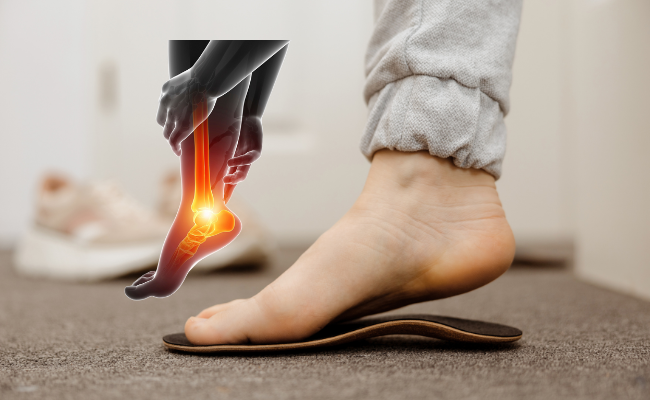How to Treat Plantar Fasciitis?
- October 19, 2023
- No Comments

What is Plantar Fasciitis?
Plantar fasciitis, a prevalent foot condition, is identified by inflammation of the plantar fascia—a substantial tissue band linking the heel bone to the toes. This inflammation results in notable heel pain, particularly during the initial steps in the morning or after extended periods of rest. The plantar fascia, resembling a resilient ligament, spans from the heel to the ball of the foot and toes. Operating like a flexible rubber band, it serves a pivotal function in connecting the foot's bones and molding the arch on the underside of the foot.
Why does Plantar Fasciitis Occur?
Plantar fasciitis typically develops due to excessive strain and stress on the plantar fascia. This strain can result from various factors, including high-impact activities, improper footwear, obesity, and issues with foot mechanics. Athletes, individuals with flat feet, and those who spend extended periods on their feet are particularly susceptible.
How does Plantar Fasciitis Affect the Foot?
The plantar fascia acts as a shock absorber and supports the arch of the foot. When it becomes inflamed, it causes pain and stiffness in the heel, making walking and standing uncomfortable. Over time, if left untreated, plantar fasciitis can lead to chronic heel pain and affect daily activities.
Treatment Solutions for Plantar Fasciitis
- Rest and Ice: Rest is crucial to allow the inflamed plantar fascia to heal. Applying ice to the affected area can help reduce inflammation and alleviate pain. Icing for about 15-20 minutes several times a day can be beneficial.
- Stretching Exercises: Gentle stretching exercises for the Achilles tendon and the plantar fascia can improve flexibility and reduce tension. Regular stretching, especially before getting out of bed in the morning, can significantly alleviate morning heel pain.
- Supportive Footwear: Wearing shoes with proper arch support and cushioning is essential for individuals with plantar fasciitis. Avoiding flat shoes or those with inadequate support can help reduce strain on the plantar fascia.
- Orthotic Inserts: Custom or over-the-counter orthotic inserts can provide additional support and cushioning. These inserts help distribute pressure evenly across the foot, reducing stress on the plantar fascia.
- Night Splints: Night splints are devices worn during sleep to maintain the foot in a dorsiflexed position. This helps stretch the plantar fascia and Achilles tendon, promoting healing and reducing morning pain.
Benefit Points of Plantar Fasciitis Treatment
- Pain Relief: Following a comprehensive treatment plan can effectively alleviate pain associated with plantar fasciitis. Rest, ice, and stretching contribute to reducing inflammation and discomfort.
- Improved Mobility: Stretching exercises and other interventions enhance the flexibility of the plantar fascia and Achilles tendon, promoting improved mobility and ease of movement.
- Prevention of Chronic Pain: Timely and consistent treatment can prevent the progression of plantar fasciitis to chronic pain. Early intervention helps address the root causes, reducing the risk of long-term discomfort.
- Enhanced Foot Support: Supportive footwear and orthotic inserts provide the necessary support to the foot's arch and heel, minimizing strain on the plantar fascia and promoting overall foot health.
- Better Quality of Life: Effective management of plantar fasciitis contributes to a better quality of life by allowing individuals to engage in daily activities without the hindrance of persistent foot pain.
Comments (0)